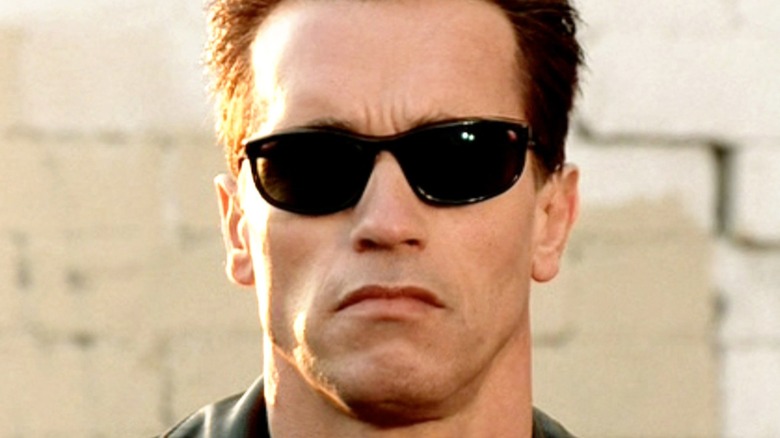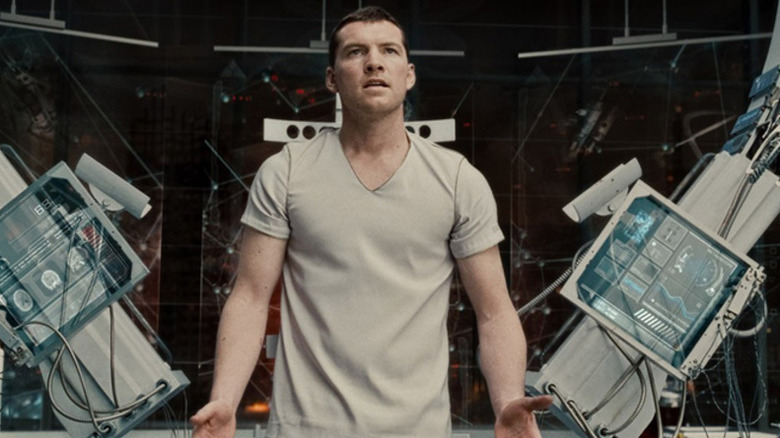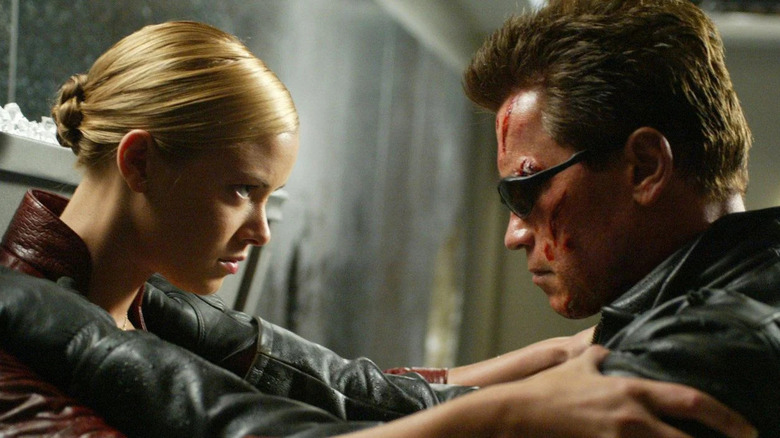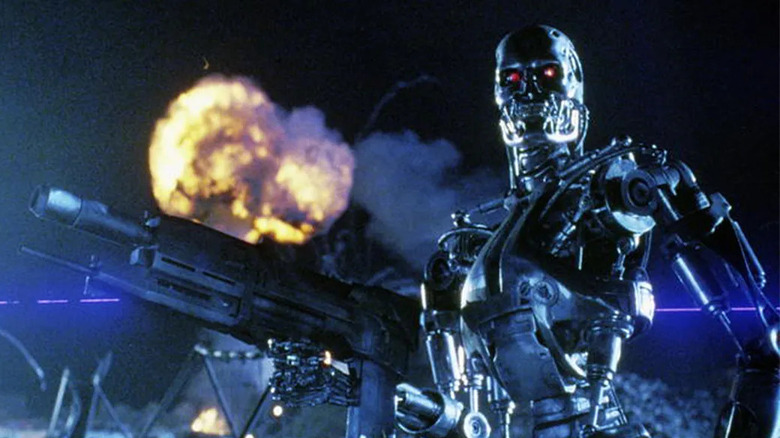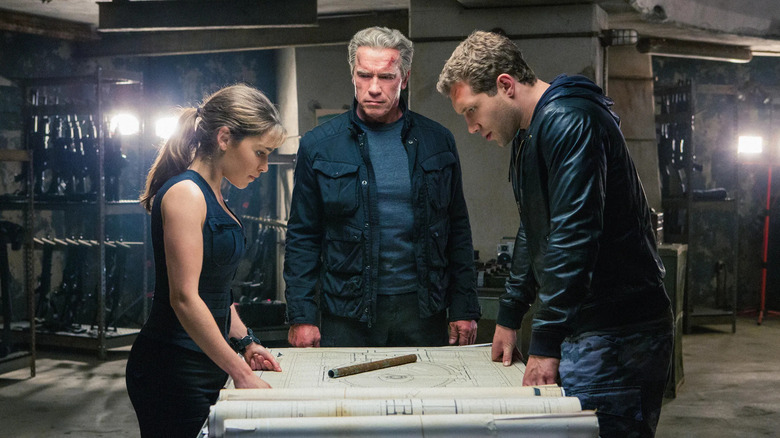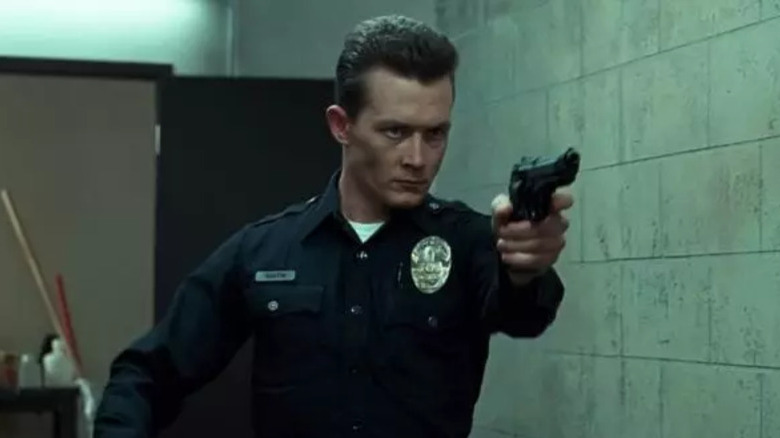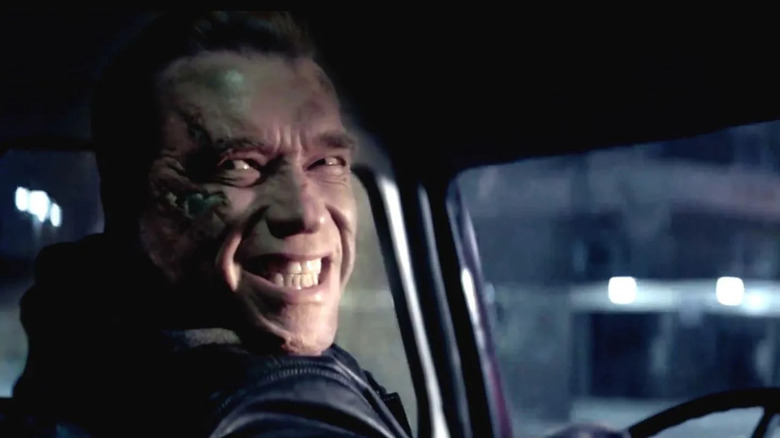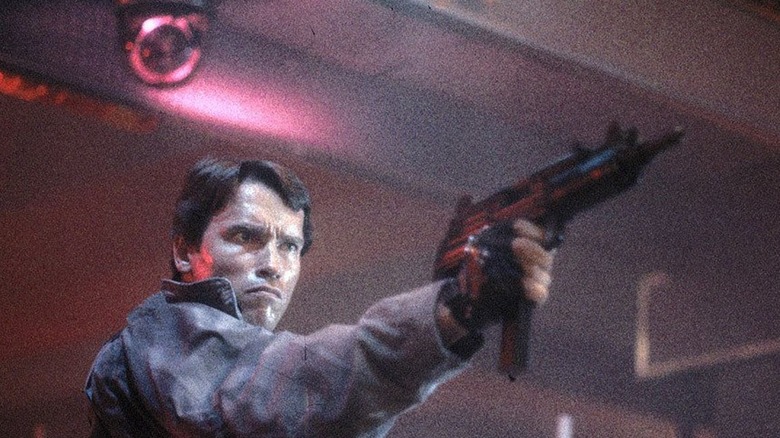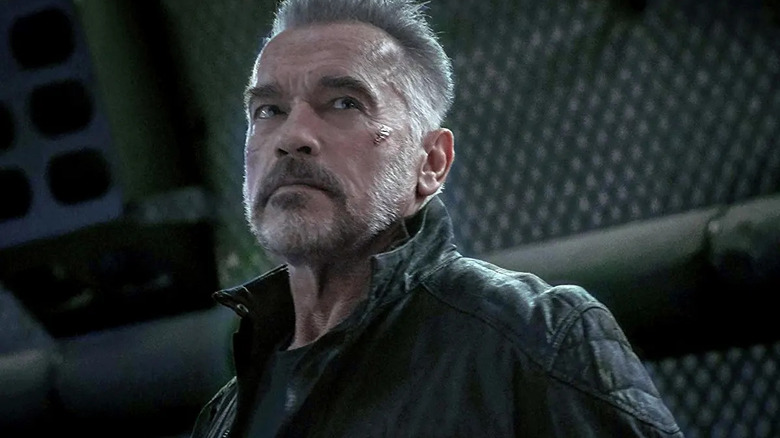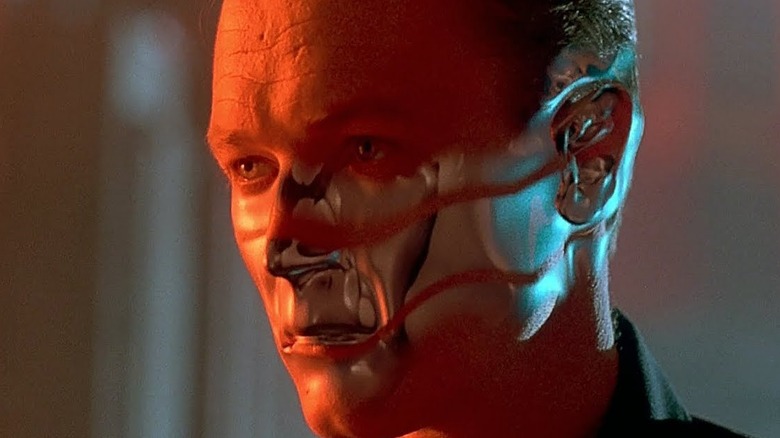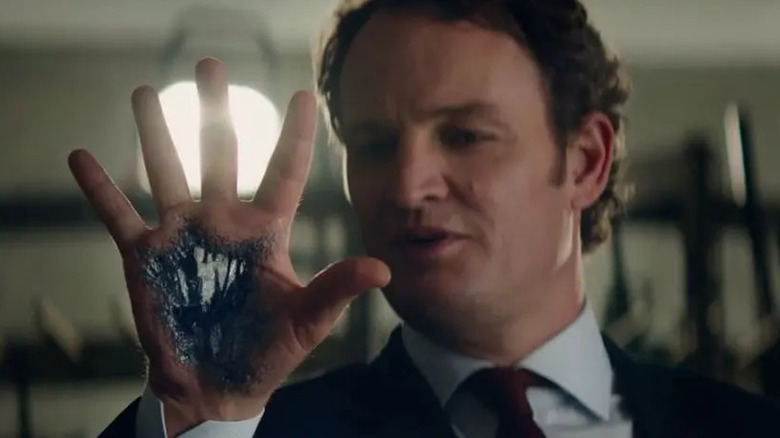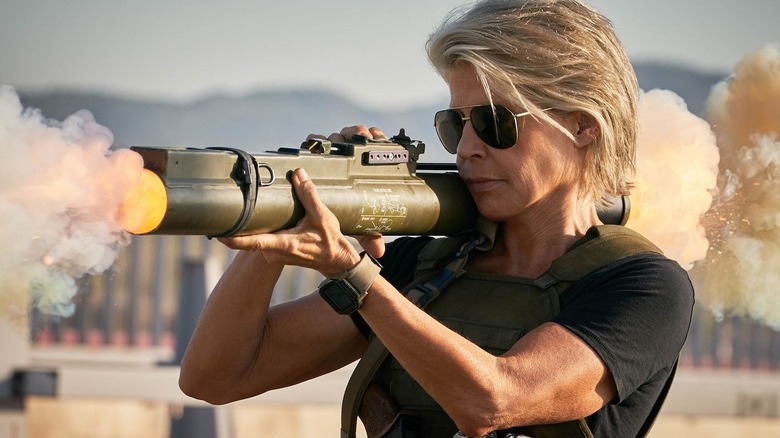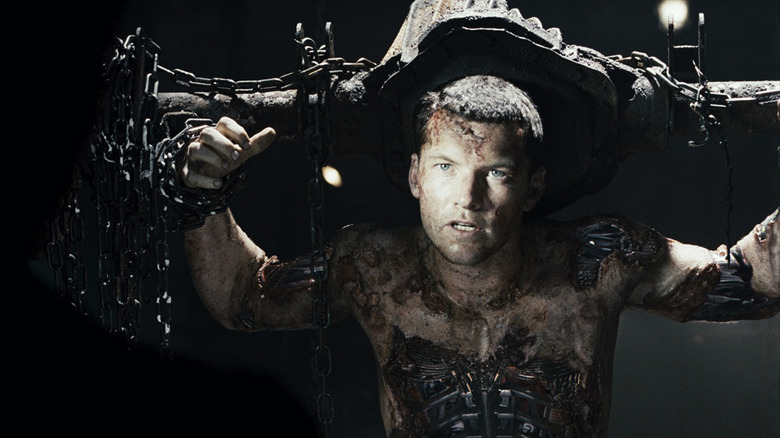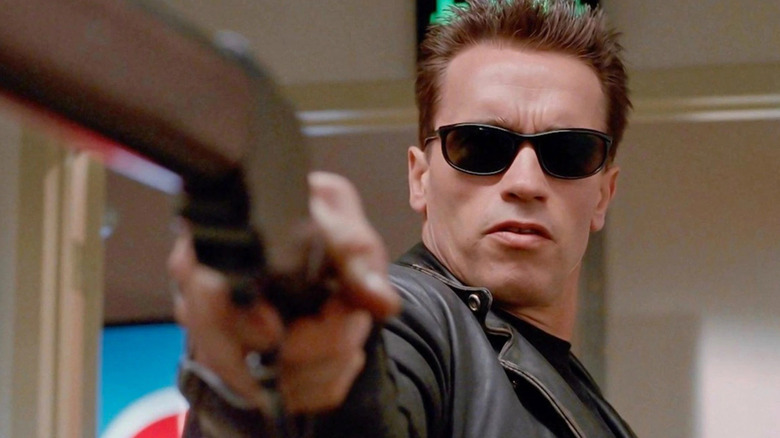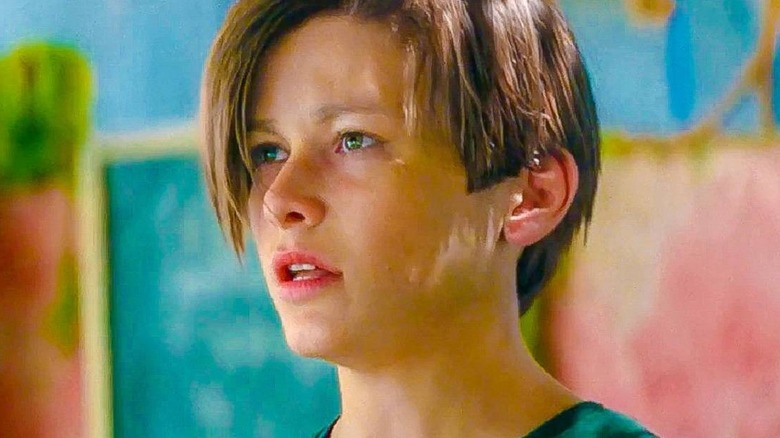The Best And Worst Things From The Terminator Franchise
The "Terminator" franchise established the ultimate blend of science fiction and action from the moment the first film, from writer-director James Cameron and co-writer Gale Anne Hurd, arrived in 1984. The movie became an instant classic, going on to claim a rare perfect '80s Rotten Tomatoes score. Catapulting star Arnold Schwarzenegger and his role as the cybernetic T-800 killing machine to superstardom, the franchise has spawned a long line of sequels, a television spinoff, and an endless sea of merchandising. The saga focuses on a woman named Sarah Connor (Linda Hamilton), who discovers her unborn son is destined to save humanity from complete extinction at the hands of sentient machines. However, the machines aren't prepared to go down without a fight, sending merciless robotic killers to the past to ensure this post-apocalyptic victory never takes place.
Though the 1984 original movie and its 1991 sequel "Terminator 2: Judgment Day" are celebrated as landmark action movies, the flaws and inconsistencies in the franchise have only grown more numerous and troublesome across decades of flawed follow-ups. Here are some of the most effective, iconic elements within the greater "Terminator" franchise, and some of the moments when "Terminator" dropped the ball and diminished its once-sterling legacy among fans.
Best: Terminator Salvation tries something new for the franchise
As maligned as its reputation may be among fans and critics, "Terminator Salvation" is a criminally under-appreciated entry in the wider "Terminator" franchise. One of the things that makes the 2009 film stand apart from the rest is that it makes the effort to break from the usual narrative formula of the series, trying something new with what a "Terminator" movie can be. Though the overall film leaves definite room for improvement, "Salvation" offers a refreshing installment, especially compared to its more contrived follow-ups.
After several movies teasing an epic war for survival between humanity and sentient machines, "Salvation" is actually set amidst the post-apocalyptic conflict, after Skynet unleashes a devastating nuclear attack. Rather than relying on the standard "Terminator" formula of the protagonists on the run from a relentless killing machine, "Salvation" is a war story, with humanity already on the defensive. Instead of a heralded hero embracing their wartime destiny, "Salvation" follows a rugged survivor in Marcus Wright (Sam Worthington), and whenever the film focuses on him and his story, the movie succeeds.
Worst: The long line of messy sequels
Let's get the most obvious shortcoming of the "Terminator" franchise out of the way — there are way too many sequels and reboots to the first two movies. Not only do each of these follow-ups tend to get lost in their own failed attempts to provide a worthy continuation of Cameron and Hurd's story, they dilute the quality of the stronger films. To make things more embarrassingly convoluted, the follow-ups play with continuity in radically different ways while noticeably suffering from a law of diminishing returns in effectiveness.
Since 1991's "Judgment Day," there have been four subsequent "Terminator" movies, none reaching the acclaim of the first two films. The franchise reached its critical low point with 2015's "Terminator Genisys," with a paltry 26% critics' score on Rotten Tomatoes. Though 2019's "Terminator: Dark Fate" saw the highest acclaim since "Judgment Day," with a 70% Rotten Tomatoes score, it was still a financial disappointment, earning $261 million at the worldwide box office.
Best: Brad Fiedel's score is a haunting masterpiece
Just like filmmaker and composer John Carpenter's theme for the "Halloween" franchise, composer Brad Fiedel's theme and score for the first two "Terminator" movies are relatively simple but instantly recognizable. The 1984 original film features a stripped-down industrial sound, driven largely by synthesizers, oscillators, and ambient noise to set the mood. These minimalist sensibilities balance the grungy '80s setting with the futuristic stakes at play in the story, with an effectively haunting melody.
Fiedel returned to score "Judgment Day" and maintained the themes from his previous work while upping the sonic possibilities for the 1991 movie. Incorporating orchestration, Fiedel provides a fuller and warmer sound for the score to take advantage of the heightened scope and elevate the story's quieter moments. Fiedel's work on the score for the first two movies subtly laid the sonic foundation for the entire franchise, with his influence felt across all the subsequent films.
Worst: Overcomplicating the time travel rules
The first few "Terminator" movies have a relatively simple approach to time travel mechanics –- combatants from the future travel back in time to alter the course of history by killing those who would shape humanity's destiny. "Salvation" largely eschews the time travel component of the franchise altogether, telling a complete story set within one relative period without anyone traveling through the time stream. This tight approach to time travel descends into progressively more complicated timeline mechanics after "Salvation," making the science fiction elements more confusing and intrusive to each film's story.
"Genisys" introduces the concepts of temporal paradoxes and divergent timelines caused by tampering with the space-time continuum, with the characters affected by the drastic changes. "Dark Fate" goes one step further by completely changing the future conflict as a different sentient A.I. replaces Skynet and successfully assassinates John Connor (Edward Furlong) before he can save humanity, disrupting the timeline. Both of these films take a relatively clean take on the concept of time travel and unnecessarily muddle it by trying to take the franchise in a new direction with mixed results.
Best: Terminator's pacing and action are expertly crafted
With the Terminators actively scouring the greater Los Angeles area for their intended targets, the movies often take their characters on the run before regrouping to take on the antagonist. This premise provides a perfect opportunity for filmmakers to ratchet up the tension as the protagonists lie low, often just barely evading their cybernetic pursuers before big action set pieces. When the movies do cut loose for the inevitable action sequences, they know how to deliver on this sudden, cathartic release of tension and suspense to great effect.
From the dimly lit nightclub gunfight in the original "Terminator" to the rousing motorcycle chase in "Judgment Day," the careful framing and engaging cinematography make for truly memorable action scenes. These punctuative sequences would not carry the same weight if the tautly paced scenes around them weren't expertly driven by mounting tension as the characters take whatever shelter they can, be it in a parking garage or an arcade. The "Terminator" movies are a masterclass in action movie pacing, knowing when to let up for air before diving back into an unrelenting chase punctuated by tightly crafted conflict.
Worst: Forced attempts at humor border on self-parody
The "Terminator" franchise has always had occasional moments of humor, often poking fun at how outlandish the situation is, employed throughout the movies to break up the tension for the audience. What the films following "Judgment Day" tend to forget is that the comedic moments in the first two movies were much more subtly employed so as to not detract from the narrative stakes and overarching tone. The questionable use of humor is apparent as early as "Terminator 3: Rise of the Machines," and does not noticeably improve in follow-ups to that 2003 film.
The jokes come early and frequently in "Rise of the Machines," from the T-800 obtaining his clothes at a gay bar and learning the phrase "talk to the hand," which he utilizes later in the movie. "Genisys" and "Dark Fate" continue to poke fun at the characters in increasingly awkward ways, with the 2019 film depicting a retired T-800 becoming an interior decorator. Though the early movies were not without levity, the later "Terminator" entries' sense of humor ventures into camp and self-parody in a way that often threatens to derail the films.
Best: The original Terminator plays out like a slasher
While the franchise is known for its bombastically explosive action, the original "Terminator" opts for a more grounded, intimate approach to delivering its thrills. The 1984 movie is almost paced like a slasher movie, as the T-800 emotionlessly and brutally kills anyone who gets in its way or interferes with its mission objectives. The only major things differentiating the Terminator from typical slashers like Michael Myers and Jason Voorhees is a metallic endoskeleton and propensity to use firearms instead of blades.
This horror sensibility is on full display when the T-800 breaks into Sarah's apartment and savagely murders her roommate Ginger (Bess Motta) and Ginger's boyfriend Matt (Rick Rossovich). Sarah desperately calls her apartment to warn her friends of the incoming threat, only for them to be preoccupied with hooking up. In true slasher movie fashion, in the immediate aftermath of this romantic interlude, the couple is murdered in a violent sequence after the suspense ramps up considerably. This horrifying moment showcases just how terrifying and relentless the Terminator can be as the 1984 film kicks into high gear.
Worst: Constantly shoehorning Arnold Schwarzenegger into the sequels
Schwarzenegger's career was catapulted to new heights by "The Terminator," and the franchise has kept its connection to the iconic action hero in every single movie. Though Schwarzenegger as the T-800 is a welcome sight in the first several films, the franchise goes to ridiculous lengths to bring him back and reprise his star-making role. By "Salvation," it definitely starts to feel like the narrative needs to move beyond Schwarzenegger's role, but the film series itself has always existed within the actor's shadow in a way that prevents it from forging new ground.
"Salvation" was produced while Schwarzenegger was serving as Governor of California, prompting the 2009 movie to use actor Roland Kickinger as a body double, with Schwarzenegger's face digitally imposed over it (per Clinton News Record). The appearance feels forced and distracts from the movie's climax rather than adding any sense of resonance or relevance to elevate the finale. "Dark Fate" similarly shoehorns Schwarzenegger's T-800 into the story, with the cyborg living in self-imposed retirement for decades before emerging to conveniently team up with Sarah late in the film.
Best: Terminator 2's visual effects remain an industry standard
"Judgment Day" pits the T-800 against the fearsome T-1000 (Robert Patrick), a more advanced Terminator from the post-apocalyptic future composed of liquid metal. The T-1000's unique composition allows him to transform his body into different forms as he stalks John and Sarah Connor. A breathtaking technical achievement in 1991, the special effects to bring the T-1000 to life still hold up today as a visually impressive feat.
In order to depict the liquid metal effect for the T-1000, the production combined CG animation, prosthetics, and masterful editing in order to achieve the desired goal (per Vulture). Cameron worked closely with Industrial Light & Magic on "Judgment Day," with approximately $5 million from the production budget spent on visual effects (via The Guardian). This investment paid off, with the liquid metal not only aging well but standing as the best visual effect in the franchise to date.
Worst: Unnecessary twists derail the sequels
The "Terminator" films following "Judgment Day" each have a tendency to employ twists late in the story to surprise audiences and up the stakes. However, these twists rarely connect with audiences and serve more as just further distractions to overcome before each story is resolved. Plus, the plot twists are not only unnecessary but seem to get worse as the film series continues, leading fans to wonder why the latter movies rely on the storytelling device at all.
"Rise of the Machines" reveals that Skynet unleashing nuclear warfare on humanity has been inevitable all along, with the T-800 moving John and his wife Kate (Claire Danes) to safety. "Salvation" features a twist at the end of the film, with Marcus sacrificing himself to save John's life by giving up his heart for the mortally wounded freedom fighter. "Genisys" posits that an alternate timeline version of John (Jason Clarke) has been transformed into a time-traveling Terminator himself, threatening a different timeline. "Dark Fate" has the oddest twist of all, with the retired T-800 secretly feeding Sarah information to track down other Terminators in a move that makes less and less sense the more one thinks about it.
Best: Linda Hamilton becomes the ultimate action hero
At a time when female action protagonists were a rarity in major Hollywood productions, Linda Hamilton's Sarah Connor joined the ranks of Sigourney Weaver's Ellen Ripley to become one of the most recognizable sci-fi action heroes in history. "The Terminator" sees Sarah transition from server at a dead end job to a fighter who delivers the killing blow on a T-800 in a fierce factory showdown. This character evolution continued into "Judgment Day" and "Dark Fate," with Sarah becoming a seasoned veteran and weapons expert quite capable of taking down Terminators on her own.
Hamilton's performance depicts Sarah Connor not just as a survivor, but as someone who is willing to hunt those that would attempt to stalk her. Years before "Halloween" reinvented its protagonist Laurie Strode as a hardened warrior, Hamilton made Sarah a bona fide action hero, channeling her trauma into a steely resolve. To balance this direction, Hamilton also displays a tragic vulnerability in Sarah as someone who has sacrificed everything to stay alive and fight for humanity, giving the franchise its most nuanced performance.
Worst: Terminator's marketing campaigns spoil its biggest twists
There are effective plot twists across the "Terminator" franchise, but some of the biggest plot developments intended as surprises have been spoiled for audiences by marketing campaigns. In the beginning of "Judgment Day," the T-800 is positioned as another model sent back to assassinate John before it shocks the teenager by saving him from the T-1000 in the nick of time. It's a thrilling twist if you don't know it's coming, but this heroic change in direction for the T-800 was spoiled in the trailer for "Judgment Day," showcasing the T-800 protecting John and Sarah.
Unfortunately, "Judgment Day" is not the only "Terminator" movie to have its big reveal exposed by its own marketing ahead of the theatrical release. "Salvation" revolves around Marcus discovering he's a cyborg after he's inspected by human freedom fighters during the war against the machines. This twist was similarly spoiled in the trailers and television ads for the 2009 film, with audiences already aware of Marcus' cybernetic secret before they could see him learning about it himself.
Best: Arnold Schwarzenegger's transition from unrelenting villain to hero
Armed with a whole arsenal of weaponry and some of the most iconic catchphrases in cinematic history, Arnold Schwarzenegger became a household name with "The Terminator." The 1984 film revolves around Schwarzenegger's performance as the T-800, with his steely-eyed demeanor and chiseled physique defining the franchise. Seven years after portraying the ultimate sci-fi antagonist, Schwarzenegger's turn as a very different T-800 in "Judgment Day" effectively reframes him as the heroic face of the franchise.
There's a reason why the film series keeps bringing back Schwarzenegger to reprise his fan-favorite role, even when it works to the story's detriment. Decades after his debut as the T-800, Schwarzenegger never feels like he's phoning it in as the futuristic killer, even with lesser material to work with in later films. "Conan the Barbarian" may have been Schwarzenegger's breakout role, but "The Terminator" is what made him an undeniable action icon and his performances continue to reflect that cold charisma.
Worst: The sequels' retcons tarnish the legacy of the superior films
The "Terminator" series is prone to the worst kind of sequels — ones that not only dilute the quality of the franchise but also actively make plot points from previous installments irrelevant. This unfortunate trend begins as early as "Judgment Day," with the revelation that Terminators have shifted their time-traveling focus to assassinate John after failing to kill Sarah. However, while "Judgment Day" stands as an effective masterpiece, the subsequent set of sequels do even more harm to the overarching story and its legacy.
After fighting so hard to avert the apocalypse by dismantling Cyberdyne in "Judgment Day," "Rise of the Machines" reveals machine-driven Armageddon was an inevitability all along, making Sarah and John's efforts useless. "Dark Fate" is the most egregious of all in this regard, with the movie opening with a T-800 successfully assassinating John before he can reach his destiny. This diminishes the lengths the Connor endured to survive in the preceding films as it finds new ways to continue the story.
